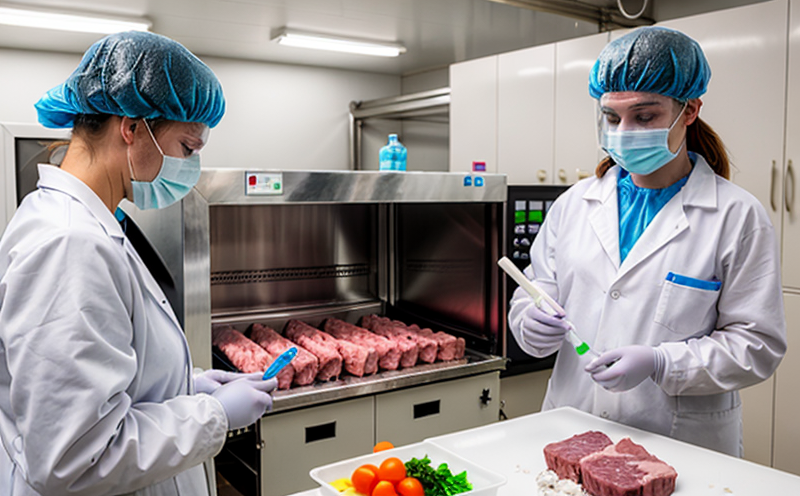ISO 11290-2 Listeria monocytogenes Enumeration Testing in Food
The ISO 11290-2 standard is a critical guideline for the enumeration of Listeria monocytogenes, a bacterium known for its potential to cause listeriosis, particularly in high-risk groups such as pregnant women, newborns, and individuals with weakened immune systems. This bacterium can be found in various food products, especially those that are ready-to-eat or minimally processed.
The standard provides a robust methodology for the enumeration of Listeria monocytogenes in foods, which is essential for ensuring public health and safety. The testing process involves several steps: sample collection, preparation, inoculation on selective media, incubation periods, and finally, microscopic examination or other confirmatory techniques to count the colonies.
The method described in ISO 11290-2 is designed to be accurate and reproducible, ensuring that laboratories can reliably detect Listeria monocytogenes at low concentrations. This is particularly important for dairy products and meat as these are common sources of contamination with this pathogenic bacterium.
The enumeration process typically starts by collecting samples from production lines or finished goods in the dairy and meat industries. These samples undergo a series of dilutions before being plated on selective media, such as Tetrathionate Broth (TTB) or Buffered Peptone Water (BPW), which are designed to support Listeria monocytogenes growth while suppressing other bacteria.
The incubation period is crucial; it varies based on the temperature and time specified in the standard. After incubation, colonies that appear to be Listeria monocytogenes are counted using a microscope or automated colony counter. This step-by-step approach ensures accurate enumeration of the bacteria.
The accuracy and reliability of this testing method are paramount for industries dealing with high-risk foods. By adhering to ISO 11290-2, laboratories can provide data that is crucial for regulatory compliance and consumer safety.
| Food Product | Detection Limit (CFU/g) |
|---|---|
| Milk and Dairy Products | <10 CFU/g |
| Meat Products | <5 CFU/g |
| Cooked Meats and Poultry | <2 CFU/g |
The detection limits provided in the table highlight the precision of this method, especially for sensitive food products. The low detection limits ensure that even minimal contamination can be detected, which is vital for preventing outbreaks and maintaining consumer trust.
Benefits
Enhanced public health by ensuring safe consumption of dairy and meat products.
Compliance with international standards and regulatory requirements.
Improved quality control processes to reduce the risk of contamination.
Prompt identification and removal of contaminated batches before they reach consumers.
Industry Applications
The ISO 11290-2 standard is widely used in various industries, particularly those dealing with dairy and meat products. It plays a crucial role in ensuring the safety and quality of these high-risk foods.
Dairy Industry: This includes milk, cheese, yogurt, and other fermented dairy products.
Meat Processing Sector: Includes poultry, beef, pork, and processed meat products like sausages and deli meats.
The standard is also applicable to any food processing facility that handles ready-to-eat or minimally processed foods. By adhering to ISO 11290-2, these industries can ensure that their products meet stringent safety standards, thereby protecting public health and maintaining consumer confidence.
Quality and Reliability Assurance
Use of standardized media: The use of Tetrathionate Broth (TTB) or Buffered Peptone Water (BPW) ensures that Listeria monocytogenes can grow while other bacteria are suppressed.
Strict temperature and time controls during incubation ensure accurate enumeration.
Microscopic examination: This step-by-step approach ensures the accuracy of the results by confirming that only Listeria monocytogenes colonies are counted.
The reliability of this testing method is further enhanced by regular calibration and validation of equipment, as well as adherence to international standards such as ISO 11290-2. This ensures that the results are consistent and reproducible across different laboratories.





